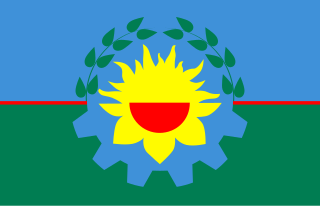 W
WThe flag of Buenos Aires Province, Argentina, was created by students and officially adopted by Provincial Law 11.997 on August 12, 1997, after being chosen among other designs by vote of the educative community in which 270,000 students aged 12–18 took part in over 2 years, supported by specialists and parents. There were 81,525 proposals, 32 of which were selected from all 16 regions along 1995–96. 4 of the final 32 were selected by a jury to be voted on by 2 million students on 12 August 1997. The flag was designed by the boys of Schools Matheu Gelicich and Faustino Sarmiento, chosen by 1,500,000 voters, garnering over half the vote.
 W
WOctober 8 marks the day of the flag of Salta, Argentina, in recognition of the creation of the province in 1814, when Gervasio Posadas, Supreme Director of the United Provinces of the Río de la Plata, issued the decree that established the creation of the Governor of Salta. That act was unrelated to the government of Tucumán and became a province, also shaped by the territory of Jujuy Province, Oran, Tarija, and Santa Maria.
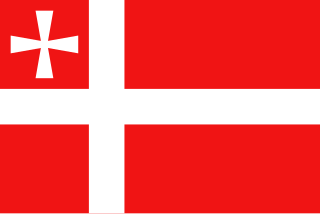 W
WFlag of Volyn region - is a banner with aspect ratio 2 to 3. In the center on a red background is an isosceles cross of white (silver) color, touching the ends of the edges of the flag. In the upper left corner is one of the oldest versions of the historical crosses of Volhynia of the 15th to the 18th century centuries..
 W
WThe flag of Hong Kong, officially the regional flag of the Hong Kong Special Administrative Region of the People's Republic of China, depicts a white stylised five-petal Hong Kong orchid tree flower in the centre of a Chinese red field. Its original design was unveiled on 4 April 1990 at the Third Session of the Seventh National People's Congress. The current design was approved on 10 August 1996 at the Fourth Plenum of the Preparatory Committee of the Hong Kong Special Administrative Region. The precise use of the flag is regulated by laws passed by the 58th executive meeting of the State Council held in Beijing. The design of the flag is enshrined in Hong Kong's Basic Law, the territory's constitutional document, and regulations regarding the use, prohibition of use, desecration, and manufacture of the flag are stated in the Regional Flag and Regional Emblem Ordinance. The flag of Hong Kong was officially adopted and hoisted on 1 July 1997, during the handover ceremony marking the transfer of sovereignty from the United Kingdom back to China.
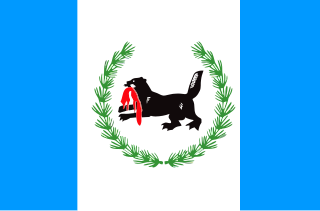 W
WThe Flag of the Irkutsk Oblast depicts three vertical stripes: blue on the outsides and white in the middle. Within the white strip, a stylized black tiger is seen holding a sable in its mouth. These two are surrounded by branches of cedar. The blue represents the waters of Lake Baikal, while white represents purity, goodness, and honesty. The green of the cedar branches represents hope, joy, and abundance.
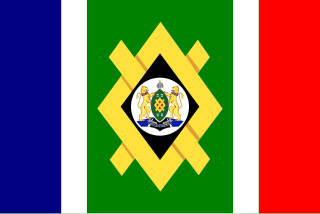 W
WThe current design of the flag of Johannesburg was adopted on 16 May 1997, replacing a previous version of the flag that had been in service since 20 October 1970.
 W
WThe flag of Koror was approved on 10 July 1997 by Ibedul Gibbons and was officially adopted on 25 July 1997.
 W
WThe flag of Liguria is one of the official symbols of the region of Liguria, Italy. The current flag was adopted on 7 July 1997.
 W
WThe Flag of Magallanes y la Antártica Chilena Region is one of the regional symbols of the Chilean Magallanes y la Antártica Chilena Region. This flag was adopted in 1997 by the regional government, also with the Regional Coat of Arms.
 W
WThe flag of Poznań is a rectangular piece of white material with the coat of arms of the city placed in the middle. It was adopted in 1997.
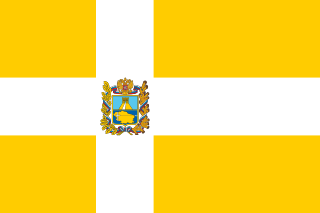 W
WThe flag of Stavropol Krai of Russia is a Nordic Cross charged with the krai's coat of arms in its centre. The cross itself is white set on a golden background. In one version, the coat of arms is depicted entirely in gold, in correspondence to the flag's background. In another version, it is in its full array of colours.
 W
WThe flag of Turkmenistan features a white crescent and five stars representing the five regions of the country. Placed upon a green field is a symbolic representation of the country's famous carpet industry. It was introduced as the flag of Turkmenistan on 27 September 1992 to replace the Soviet-era flag which consisted of a red background with two light blue bars in the middle. The modified version with a 2:3 ratio was adopted on 23 January 2001. State Flag and Constitution Day is celebrated on 18 May.
 W
WThe current flag of Tuvalu was instated when the country became independent in 1978, after the separation from the Gilbert and Ellice Islands in 1976.
 W
WThe flag of Ust-Orda Buryat Okrug, in the Russian Federation, is a blue field charged with a white argabar sun emblem within a golden disc. The disc is surrounded with four golden bezants at the cardinal positions. At the bottom of the flag is a white band charged with a red meander ornament, which symbolizes the lifestyle in the past and a prosperous future for the Buryat tribes.
 W
WThe flag of Vologda Oblast, a federal subject of Russia, was adopted 26 November 1997. The flag is a field of white, with a red vertical band on the fly. A charge of the Vologdan seal is in the upper hoist corner. The seal is red, with a hand emerging from a cloud, holding an orb and a sword. A crown floats over the hand. The ratio of the flag is 2:3.